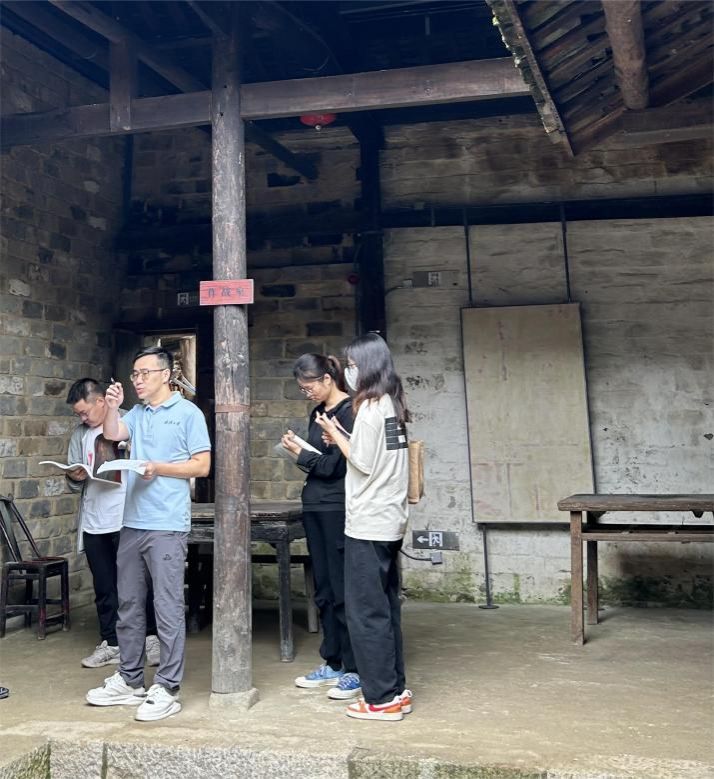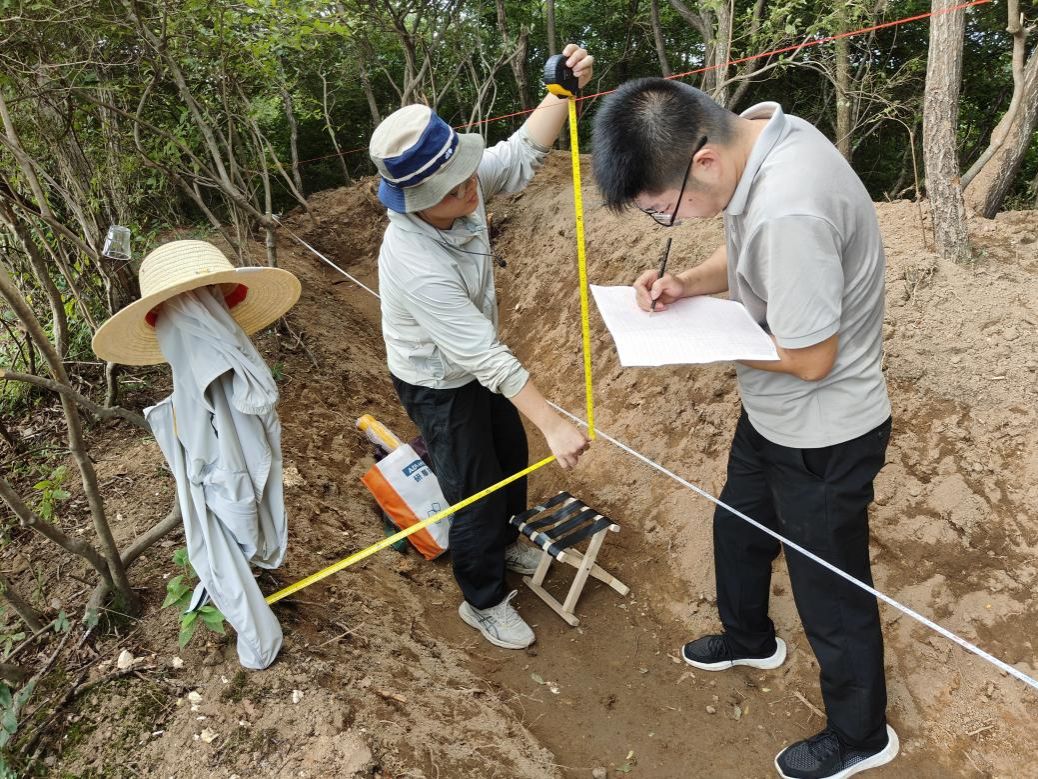The Long March National Cultural Park in Yingshan, Hubei Province, was officially opened on November 1, 2023. Some of the work relating to the park, including the overall display content compilation and survey and clean-up work of battle trench sites was undertaken by the team led by Professor Song Haichao and Assistant Curator Peng Jiao from Wuhan University. For a purposeful exploration of new modes of protecting and displaying revolutionary cultural relics, the team has been based in Taojiahe Township, Yingshan County for nearly two years, making remarkable achievements.
Comprising several teachers, graduate students and undergraduates from Wuhan University’s School of History and Wanlin Art Museum, the team engages in the use of heritage work for popularization to the population while basing the value of heritage on academic research, which they refer to as ‘knowledge transport’.
Involving the demolition of houses, transformation of the township, integration of cultural symbols and lots of other projects, the construction of the Long March National Cultural Park was considered of great importance by the provincial and municipal governments as it is the first such park in Hubei Province. Therefore, it was extremely important to communicate with various institutions, leaders, experts and scholars to ensure that everyone agrees on the basic positioning of the presentation. The team adhered to the principle of combining ‘professional’ and ‘academic’ with local realities, ensuring the smooth progress of the project and a high level of professional respect.

Members investigate and collect movable cultural relics
At the beginning of the work, the team had to understand the history of the Second and Fifth Red Army in Yingshan and the relevant cultural relics preserved in the local area. They decided to combine the Exhibition Hall, three old revolutionary sites and one combat site for the display. However, the overgrowing weeds and bushes around the sites posed a challenge for trench representation. The solution adopted by Professor Song Haichao from Wuhan University’s School of History and his team was to carry out preventive protection, and investigate, record and conduct spatial analysis by means of infrared filtering and archaeological investigation at the same time, to restore the Battle of Ox Back with trenches. After two years of effort, the team established a characteristic focus on the Twenty-fifth Red Army's revolutionary history. The team created the ‘1+4+1’ space experience field, blending Red Army space-time during the Long March with a display experience window combining ‘point, line, surface, and area’. This approach was reported by China Cultural Relics News.

Team designs the layout of revolutionary cultural relic
From consulting historical information to visiting sites, from investigating trenches to exhibiting revolutionary sites, the team opened the class in the front line of the protection and provided students with unparalleled experiences. Not only did they learn about cultural relics investigation, protection, research, and display, but they also received a profound education in revolutionary tradition in Dabie Mountain.
The two years rooted in Taojiahe Township also brought the team different experiences and emotions. “There was a moment that struck me most,” Song recalled. “It was when we visited the site of Yingshan Taojiahe Trench with students.” At that time, the trail was only widened by roadbed, and no steps had been laid. Probably spending one hour and resting twice along the way, the team was out of breath and extremely exhausted when they finally arrived at the destination. This experience highlighted the arduous conditions faced by the young Red Army soldiers during the Long March. “Only in the same scene can we appreciate the spirit of the Long March,” Song said. This was also the starting point on the theoretical basis of ‘genius loci’ in their planning.

Cleaning and investigation of trench ruins
Since his engagement with heritage activation in 2018, Song and his team have been exploring a new mode of combining the cultivation of students, service to local cultural tourism and the sharing of results. In this way, Wuhan University and the local government cooperate closely, helping Song’s team achieve various results. This subject offers professional training to students as well as spread relevant knowledge to the public by publishing special issues and monographs.
Although the preparations for this subject are now complete, the work continues. After planning and curation, Song and his team will conduct audience research to evaluate their project and identify problems in the planning process, which is fundamental to improvement and follow-up work.
Reflecting on the historical research, Professor Song emphasized the unique insights gained from different types of museums and the profound respect for the Red Army's hardships “In the project, we were told actual stories of the Red Army by the elderly, just like we are weathering that era, and each of us indeed felt that our life today is hard-earned. The Long March National Cultural Park in Yingshan section serves as a bridge between our predecessors and us, linking that historical period with today’s life. In the whole process, we team members felt awesome and respectful from the bottom of the heart,” Professor Song recalls.
In addition to Yingshan, Song’s team also works on heritage activation of Anyuan Workers’ Club, Anyuan Workers’ night school and The 20th Army Headquarter of the Northern Expedition, among others. “The work in Yingshan armed us with profound knowledge and extensive experience. We are bound to continue our explorations and endeavor to preserve and display revolutionary cultural relics,” said Song.
Photo by Song Haichao and his team
Edited by Hu Zheng


